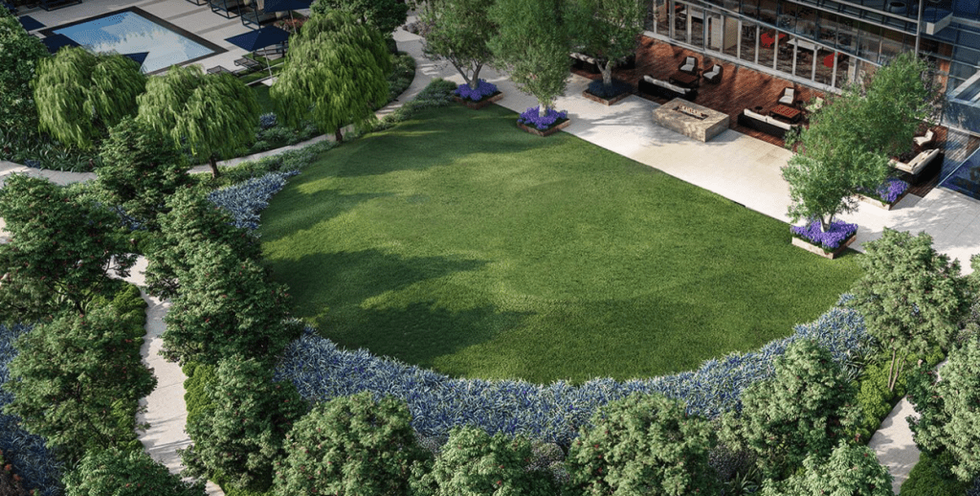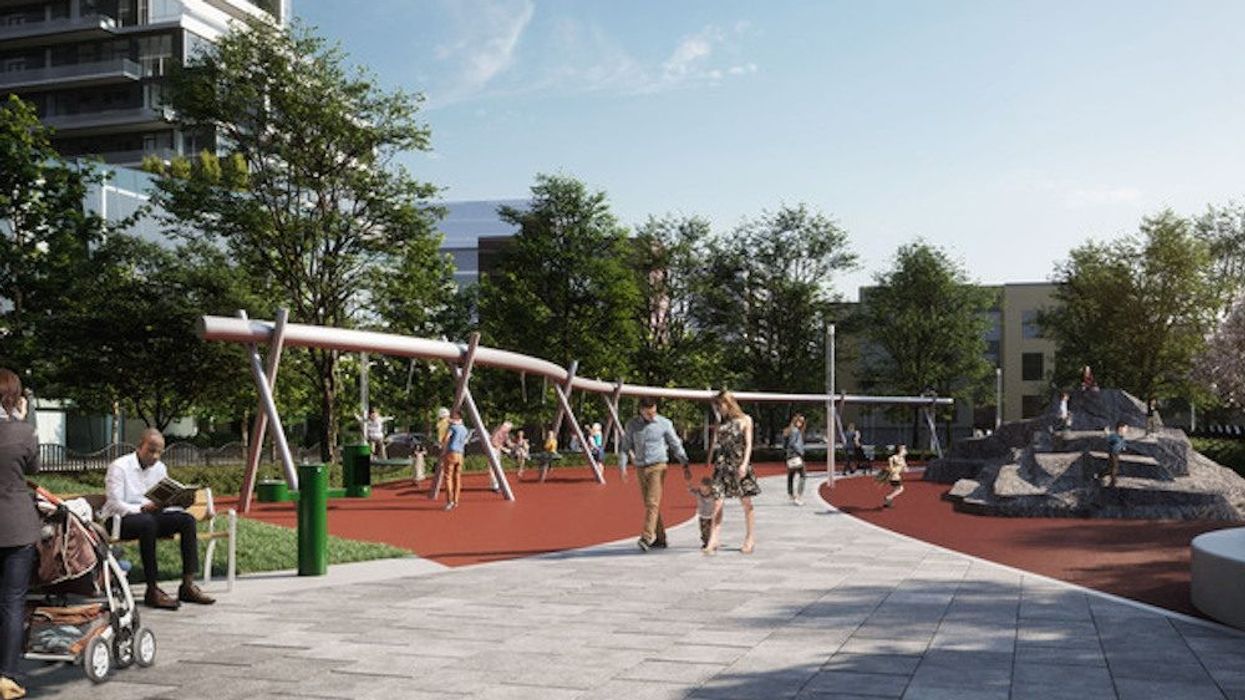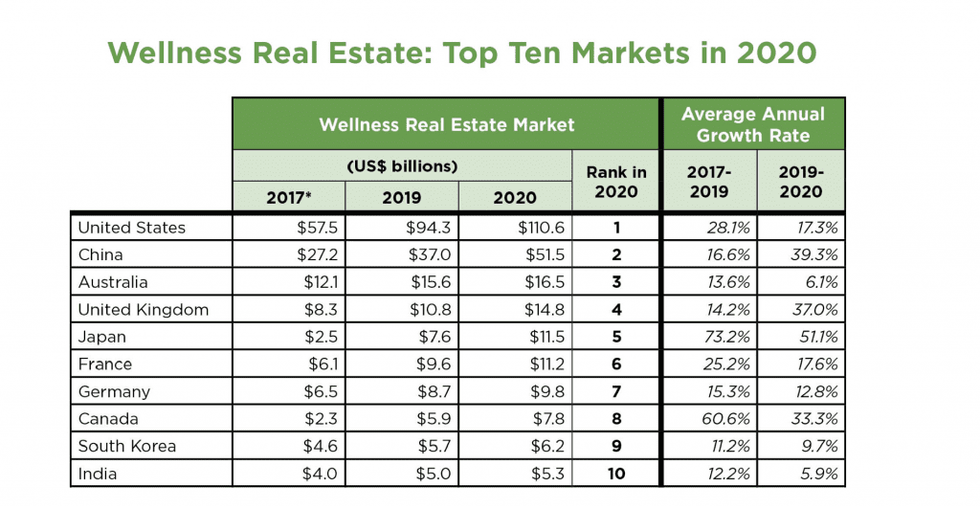Wellness real estate is having a major moment in Canada -- and one that will undoubtedly last.
While Canada ranks eighth in the top 10 national markets for wellness real estate, what’s striking is the huge growth in the sector the country has seen between 2017 and 2020. During this three-year period, Canada’s wellness real estate sector saw a massive 240% increase in growth, according to the Global Wellness Institute (GWI). This makes the country second among recent world growth leaders.
The GWI defines wellness real estate as commercial, residential, or institutional properties that incorporate intentional wellness elements into their designs, materials, and building, as well as in their amenities and services.
This could mean anything from top-of-the-line air purification systems to fitness facilities or even an abundance of green spaces.

It’s not just Canada that’s seen a notable hike in wellness real estate as of late. From 2017-2020, the global market grew at a 22% annual average, expanding from $148 billion in 2017 to $225 billion in 2019 to $275 billion in 2020, according to the GWI. Wellness residential projects skyrocketed in these three years, from 740 in 2017 to over 2,300 today.
Pre-pandemic, the wellness real estate market had already begun to surge. Between 2017 and 2019, global wellness real estate grew 23% each year compared with 5.4% growth for construction overall. This disconnect remained true for every global region, says GWI.
COVID has only heightened the need for wellness-centric design to shift from becoming a nice idea to a necessity. From 2019 to 2020, wellness real estate continued to grow by over 22% globally, even as overall construction shrank by -2.5%.
“Just three years ago, wellness real estate was a concept not well understood by consumers, builders, developers or investors, but we predicted demand would soon hit like a tsunami. That moment has arrived,” said Ophelia Yeung, GWI senior research fellow. “The pandemic has driven the idea of ‘building for human health’ into the mainstream consumer consciousness, and the recent market growth far exceeded our predictions, as well as general economic growth trends.”
Seven countries -- the US, China, Australia, UK, Japan, France, and Germany -- account for 82% of the entire wellness real estate market; the US and China alone comprise roughly 60%, according to the GWI.
But Canada is certainly making progress. Japan is the only other country to experience significant growth on the same level as us, with a 360% growth rate in the sector from 2017 to 2020. Meanwhile, the US, China, UK, France, Netherlands, Denmark, Switzerland, Singapore, Norway, Italy, and Finland essentially doubled their markets.
“So many macro forces -- our fast-aging world, our stress and loneliness crises, the rise of remote work, a consumer demanding more sustainable living -- means the growth trajectory for wellness homes and building design will only rise,” said Katherine Johnston, GWI senior research fellow.
“But COVID-19 forced us to see our homes and built environment in a radically new light, as the protectors and enablers of our very health and wellbeing. Wellness real estate is now quickly moving from elective to essential.”






















